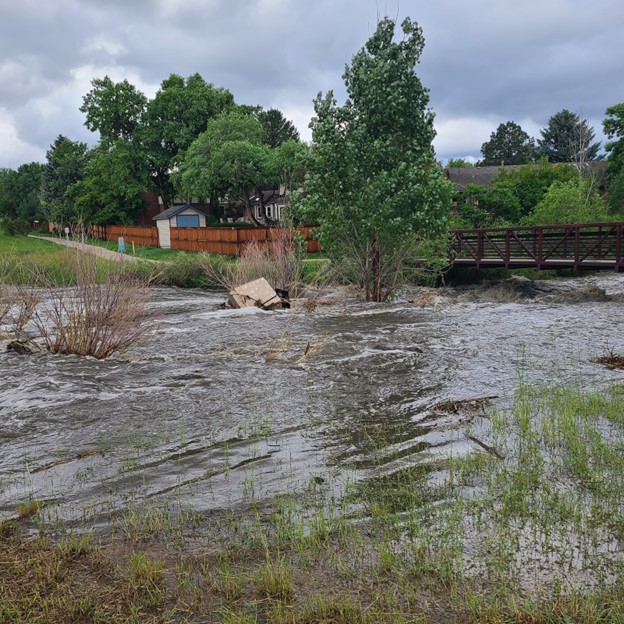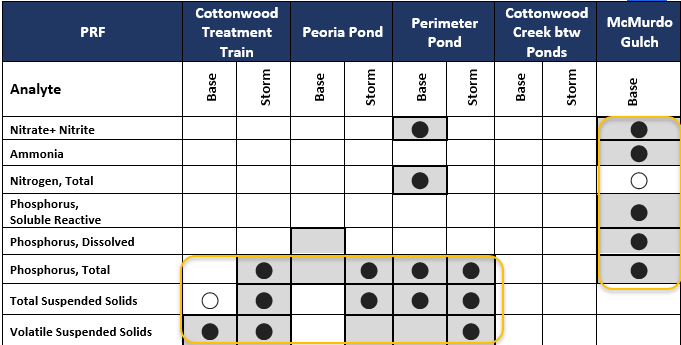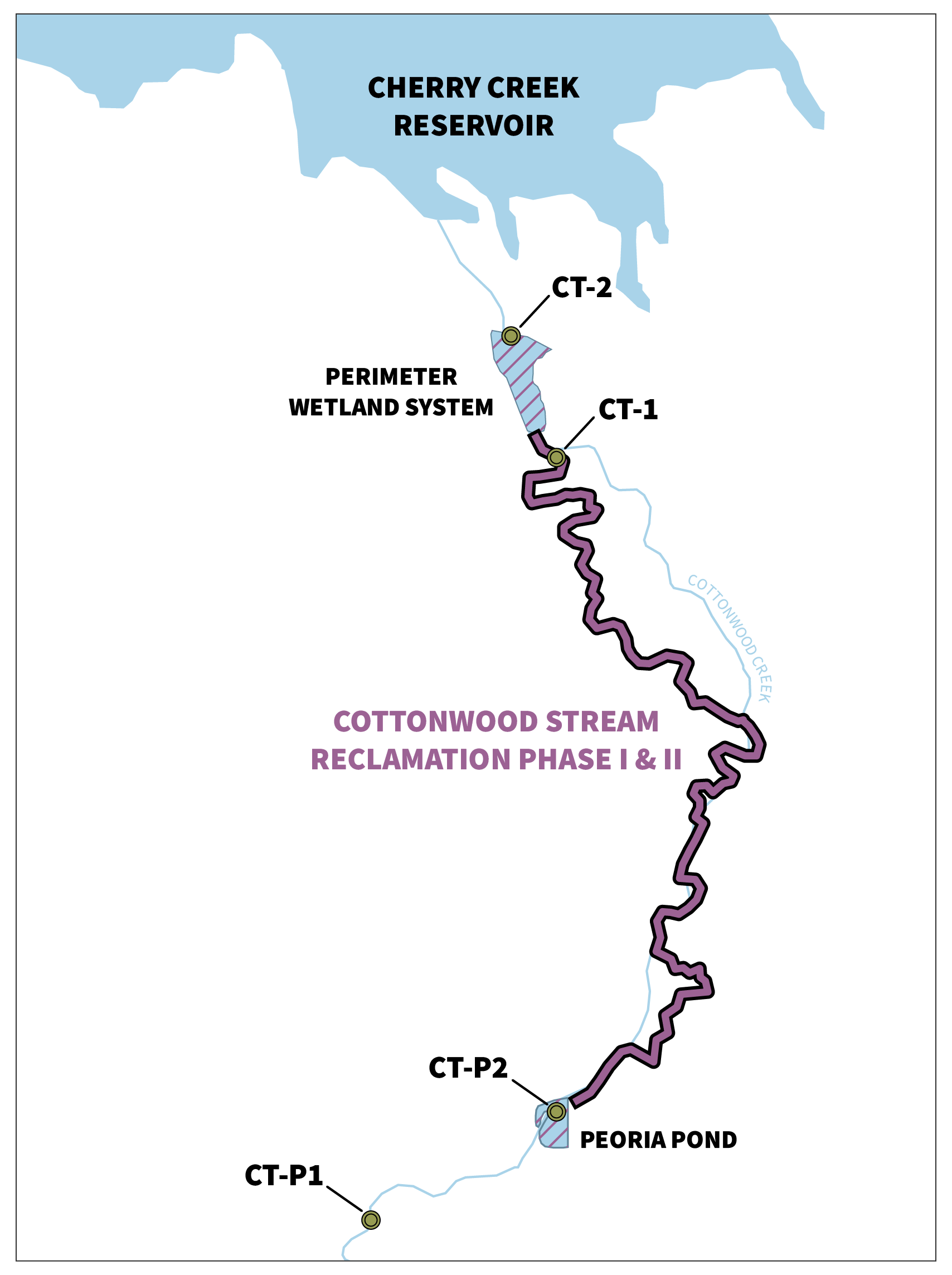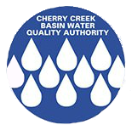PRF Monitoring
Highlights:
During 2023:
- PRF effectiveness was evaluated for significant changes over time and geospatially using the PRF statistical analysis tool available on the data portal.
- The Cottonwood Creek “treatment train” effectively reduces phosphorus (TP) and total suspended solids (TSS) in storm flow conditions as designed
- In WY 2023 there were significant reductions in median TP and TSS concentrations upstream to downstream through both Cottonwood Ponds.
- Peoria Pond demonstrated lower median TP concentrations downstream during all flow conditions and lower TP and TSS during storm flows during WY 2023 and over the last 10 years.
- The Perimeter Pond demonstrated lower median TP and TSS concentrations downstream during all flow conditions in WY 2023 and the same pattern over the last 10 years.
- All monitored nutrients were reduced upstream to downstream of the stream reclamation projects that have been completed on McMurdo Gulch.
The Cherry Creek Basin has multiple pollutant reduction facilities (PRFs) in various locations through the watershed, most notably in Cottonwood Creek. Together, stream reclamation and wetland detention systems comprise a passive treatment train approach to reduce nutrients and sediments, especially during storm events.
These PRFs are monitored on an ongoing basis to assess water quality benefits upstream to downstream annually and over time.
The Cottonwood Treatment Train (Peoria Pond, Phases 1 and 2 of stream reclamation completed on Cottonwood Creek downstream, and the Perimeter Pond) showed statistically significant removal efficiencies for median phosphorus (TP) and total suspended solids (TSS) when comparing concentrations from above (upstream) to below (downstream) during storms in WY 2023 and over the last 10 years (2013-2023). Likewise, Peoria Pond also showed significant removal of TP and TSS upstream to downstream during storm flow conditions over the same time period. The Perimeter Pond PRF demonstrated significant reductions in median TP, total nitrogen (TN), and TSS concentrations up to downstream in base flows and for TP and TSS in storm flows. The storm in late June on Cottonwood Creek caused some equipment damage requiring replacement at two of the CCBWQA’s monitoring sites.

Learn More in the WY 2023 Monitoring Report
Useful Links

Summary of Significant Reductions of Nutrient and Suspended Solids Upstream to Downstream in CCBWQA PRFs, WY 2023 and 2014-2023*

Cottonwood Creek Pollutant Reduction Facilities

